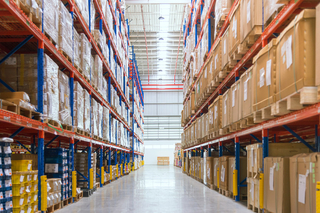Work-related musculoskeletal disorders (WMSDs) are, above all, one of the most common diseases in Europe. In addition, they are also associated with the logistical activity of a company. Thus they mainly affect the back, neck and shoulders. Similarly, they can also cause minor discomfort or disability in the most severe cases, necessitating sick leave.
According to the European Agency for Safety and Health at Work, LMERTs cost employers millions of euros. Whereas, avoiding them will help improve workers’ lives and have a major impact on their productivity and daily activity.
► Logistics: from reception to dispatch
Work accidents are twice as frequent in the logistics sector than in any other, due to the high physical activity. To prevent accidents, the first step is a detailed analysis of the working environment and the different tasks that take place in a warehouse:
- Reception of goods;
- Storage and organisation of products in the warehouse;
- Product labelling and classification;
- Preparation of packaging;
- Sending orders.
In short, these tasks require numerous movements, which sometimes involve lifting and handling heavy loads, forced postures, sudden movements, vibrations, among others. To avoid injuries, the risks associated with each job must be studied and the necessary measures taken.
In the European Union, 28% of transport workers suffer from back pain and 25% from muscular pain.
 What are the risks that warehouse operators may be exposed to?
What are the risks that warehouse operators may be exposed to?
First of all, the risks they may be exposed to in a warehouse are very diverse:
- Pain, heat, cramps, among others;
- Intensive use of certain musculoskeletal areas, contributing to serious injuries;
- There are also environmental limitations: air currents, very high or very low temperatures are also possible risks for warehouse operators;
- Increased auditory fatigue if the operator is exposed to very loud sounds and volumes.
Accidents at work
In summary, possible work accidents in a warehouse can also contribute to organizational problems: risks linked to the movement of people, machines circulating in the warehouse, among others.
- Sprains, dislocations, fractures;
- Fall of a heavy product;
- Dangerous products (chemical and/or biological).
Physical restrictions
- Vibration from any warehouse machinery;
- Risks of exposure to cold (e.g. in a cold room);
- Carrying objects manually;
- Standing for a long time;
- Repetitive gestures;
- Forced movements: spine, shoulders, elbows and wrists.

What are the actions to prevent musculoskeletal injuries?
Regular medical check-ups
In this sense, regular medical visits are absolutely essential for these professions which exert greater physical effort. The doctor can thus check the state of health of the people who work in a warehouse and warn in case of serious injuries, recommend an annual check-up.
Of course, during the medical consultation, consideration must be given:
- The ability of the employee to bear loads over 55 kg;
- Whether a clinical examination has been carried out, for example, to check the professional capacity of the operators and that, therefore, no symptoms such as pain or discomfort have been detected.
Preventive actions
In this sense, it is possible to limit LMERTs through preventive and organisational actions in your warehouse:
- Organise storage areas to improve access and ensure the safety of your operators;
- Use handling equipment appropriate for each good (weight, format, volume);
- Create circulation and storage areas;
- Define traffic rules and areas;
- Check the good condition of the shelves to prevent products from falling;
- Replace equipment that is in poor condition, such as pallets, for example;
- Use appropriate material for the warehouse in order to facilitate the work of the operators and avoid possible accidents: use forklift trucks or pallet trucks for moving goods;
- Limit the weight of product packaging;
- Train warehouse operators on the correct actions to be taken into account in the workplace.
Subsequently, with these actions, the possible risks to which the operators are exposed will be considerably reduced.
So, the 5 key points to remember are:
- Warehouse operators make a lot of physical effort and are more exposed to LMERTs (musculoskeletal injuries);
- To avoid the injuries, prevention is important, which involves carrying out a correct risk assessment based on the work and the tasks to be performed, in addition to regular medical consultations;
- Properly train the team in order to prevent occupational risks;
- Providing operators with the resources that enable them to carry out their work in the most appropriate way (ergonomic designs, machinery, among others);
- Organise the warehouse and work stations to prevent musculoskeletal disorders.
At RAJA we are specialists in packaging! If you need advice, contact our specialists on 707 788 008 or by email: contacto@rajapack.pt. They will be happy to help you choose which solutions best suit your business.














